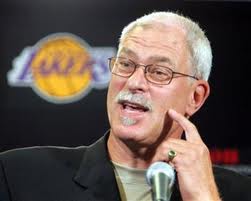Detroit Pistons’ head coach John Kuester recently found himself at the epicenter of the worst of management storms: Mutiny. Seven Pistons players apparently staged a protest against Kuester, purportedly wanting ownership to ouster him, by skipping a required practice. Kuester responded by benching the protesting players in a loss against the 76ers.
There are conflicting reports about what actually led to this whole mess in Detroit, as well as about who is more or less to blame. Regardless, the important question for us is what the hell a manager can do to end a serious controversy and return his team to a state of relative calm, normalcy and productivity?
Here are 3 things a manager facing mutiny must do:
1. Take Stock. Bad storms are violent and disruptive. But managers need to find time in a quiet place to reflect on how they got to this awful point to begin with. And because managers are in the center of it, they are wise to get counsel from a smart, objective, observant, straight-taling sounding board. Could be a colleague, mentor, executive coach or hired consultant. An objective person can help you identify the keys to sorting through all of the noise, and understanding how you got here and where you are now: What factors led to this? When did the problems begin? How did it escalate? Who is involved? Who holds the power? What are the possible outcomes? Which, among those, are the best for you (or least undesirable)?
2. Own Your Own Shit. When asked about his job status amidst the Pistons’ fallout, Detroit’s Keuster said: “One of the things you have to do is feel comfortable about the way you're handling things, and I feel comfortable." I’m often accused of looking too much into things, but Kuester sounds to me like someone who is not owning any responsibility for his team’s mess, and that strikes me as problematic. Every manager facing mutiny contributed to it at least a little bit: maybe he hurt an employee’s feelings, or let the powerful disgruntled employee go unchecked for too long, or reacted too severely when team policies were violated. Managers must answer honestly what they contributed to the trouble or the mutiny will end with the manager walking the plank.
3. Initiate a System Shock. Don’t pretend it’s business as usual. Because your employees are revolting, you are in crisis. Crises require crisis management. You need something strategic and big to let your people know that radical change is coming. Some possibilities, depending on your own situation:
· All-Hands Emergency Meeting/Off-Site: Redefine your team’s mission. Identify new ground rules. Re-establish trust. Blah, blah, blah. Who cares what you do when you're there? You need a profoundly impactful event. One-day events rarely create lasting change, but you need to stop the negative landslide and stabilize the troops. This might be your only chance.
· Cut Off the Monster’s Head: Sometimes, “Taking Stock” will reveal that the power of the opposition lies in the hands of one thug who’s wreaking all the havoc (in Detroit’s case, fingers are pointing at Rip Hamilton). In that case, your best move might be to remove him. Sure, if he’s a compelling leader, you might have others follow him out the door. But you’re just as likely to gain the respect of those who remain, and hopefully you’ll have a more positive powerful force fill the void. If nothing else, you will have ridded your team of the thug’s poison.
Mutinies happen for a variety of reasons: crazy managers who drive employees to revolt, powerful veteran employees who use their influence to organize a walk-out, or a confluence of negative outside events. No matter the reason, mutinies are unnerving for any manager, and often ultimately result in a manager’s departure. Because they are so serious, they need to be dealt with seriously, swiftly and effectively by the manager if he has any chance to survive and bring his team through.
About Sean O'Neil
Sean O’Neil is an expert in workplace and team dynamics. He is also Principal and CEO of One to One Leadership (www.one2oneleadership.com), a sales and management training firm with clients that include the National Basketball Association, Major League Soccer, News Corporation, First Data, ADP, Xerox, the Oakland Raiders and the New York Knicks. Sean and John Kulisek co-authored Bare Knuckle People Management: Creating Success with the Team You Have – Winners, Losers, Misfits and All, which is due to be published in May 2011. Sean has contributed to or been featured in, among others, The New York Times, the Wall Street Journal, Selling Power Magazine and Incentive Magazine.









